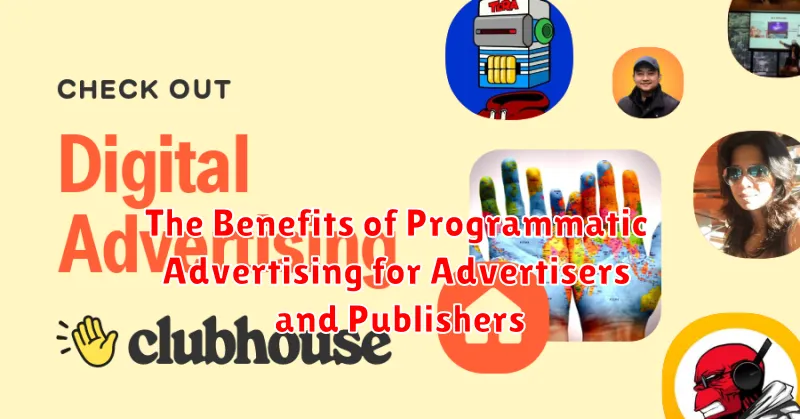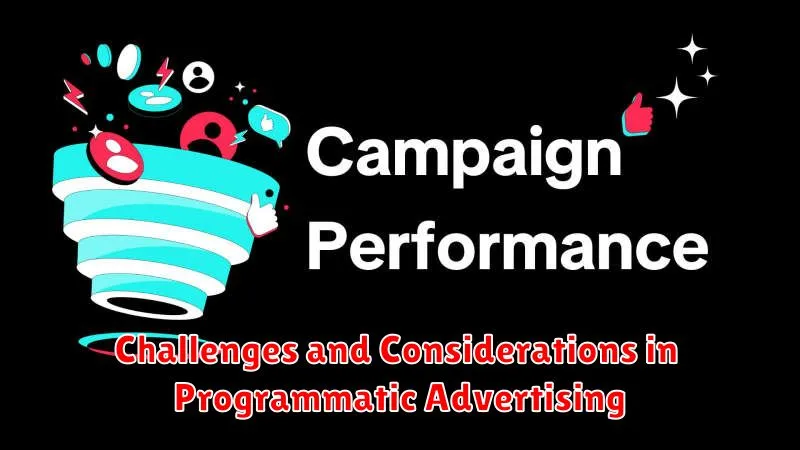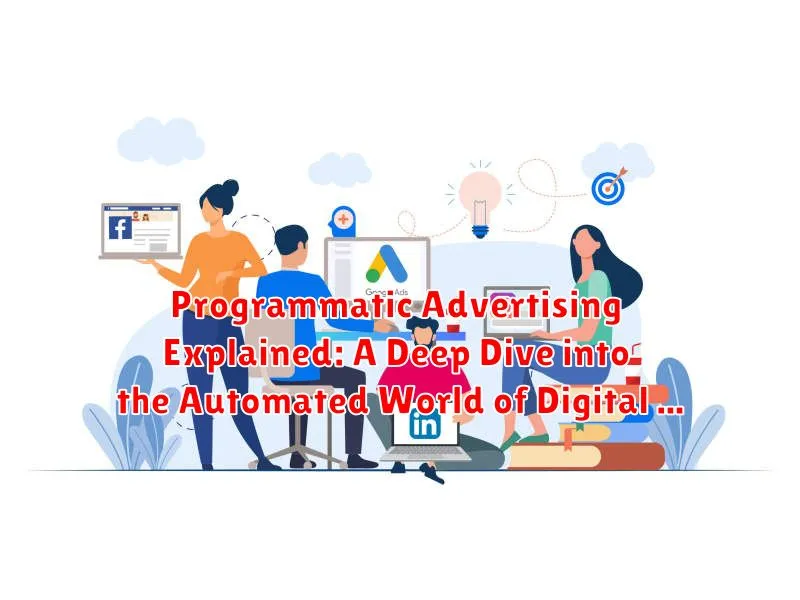In today’s dynamic digital landscape, programmatic advertising has emerged as a pivotal force, revolutionizing the way businesses connect with their target audiences. This sophisticated, automated approach to buying and selling digital advertising space offers unprecedented efficiency, precision, and scale. Moving beyond traditional methods, programmatic empowers advertisers to reach the right consumers, with the right message, at the right time, across various digital channels, thereby maximizing return on investment. Our deep dive will explore the multifaceted nature of programmatic advertising, shedding light on its core principles and significant impact on the global advertising ecosystem.
This article aims to provide a comprehensive understanding of programmatic advertising, demystifying its complexities and illustrating its potential for both seasoned marketers and those new to the field. We will delve into the key components of programmatic, including real-time bidding (RTB), demand-side platforms (DSPs), and supply-side platforms (SSPs). We will also analyze the various programmatic advertising strategies and tactics employed by businesses worldwide, while addressing common misconceptions and highlighting best practices for successful implementation. Prepare to navigate the automated world of digital ads and unlock the full power of programmatic.
What is Programmatic Advertising and How Does It Work?
Programmatic advertising represents the automated process of buying and selling digital advertising space. Unlike traditional methods involving manual negotiation and insertion orders, programmatic advertising utilizes algorithms and machine learning to purchase ads in real-time.
The core principle is to serve the right ad, to the right person, at the right time, for the right price. This is achieved through sophisticated systems that analyze vast amounts of data to understand user behavior and identify optimal opportunities for ad placement.
The process typically involves these steps:
- A user visits a website or uses an app.
- Information about the user and the page is sent to the ad exchange.
- Advertisers bid on the opportunity to show an ad to that user.
- The winning bid secures the ad placement, and the ad is displayed to the user.
This entire process happens within milliseconds, enabling efficient and targeted advertising campaigns.
The Key Components of Programmatic Advertising: DSPs, SSPs, and Ad Exchanges
Programmatic advertising relies on several key components working together to automate the buying and selling of ad space. These include Demand-Side Platforms (DSPs), Supply-Side Platforms (SSPs), and Ad Exchanges.
DSPs (Demand-Side Platforms): These platforms allow advertisers to manage and optimize their ad campaigns across multiple ad exchanges and SSPs. They enable advertisers to bid on impressions in real-time, leveraging data and algorithms to target specific audiences.
SSPs (Supply-Side Platforms): Also known as sell-side platforms, SSPs are used by publishers to manage their ad inventory and maximize revenue. They connect publishers to multiple ad exchanges and DSPs, allowing them to sell their ad space to the highest bidder.
Ad Exchanges: Ad exchanges are digital marketplaces where DSPs and SSPs connect to buy and sell ad space through real-time bidding (RTB). They provide a transparent and efficient way to match advertisers with publishers.
Understanding Real-Time Bidding (RTB) in Programmatic Advertising
Real-Time Bidding (RTB) is the backbone of programmatic advertising, enabling the automatic buying and selling of digital ad impressions in a real-time auction. This process happens within milliseconds, allowing advertisers to bid on individual impressions based on user data and targeting parameters.
Here’s a simplified breakdown of the RTB process:
- A user visits a website or app.
- The publisher’s Supply-Side Platform (SSP) sends an ad request to the Ad Exchange, including user data.
- The Ad Exchange broadcasts the impression opportunity to multiple Demand-Side Platforms (DSPs).
- DSPs analyze the user data and determine the value of the impression for their advertisers.
- DSPs submit bids based on their predefined parameters.
- The Ad Exchange selects the winning bid.
- The winning ad is served on the website or app.
RTB facilitates efficient and targeted ad buying, ensuring advertisers reach the right audience at the optimal price. By using data-driven insights and automated processes, RTB enhances campaign performance and optimizes advertising spend.
Different Types of Programmatic Advertising: Open Auction, Private Marketplace, and Programmatic Guaranteed
Programmatic advertising encompasses various methods for buying and selling digital ad space. Each approach offers distinct features and levels of control. The three primary types are Open Auction, Private Marketplace, and Programmatic Guaranteed.
Open Auction (Real-Time Bidding – RTB)
The Open Auction, also known as Real-Time Bidding (RTB), is a public auction where advertisers compete for ad impressions in real-time. This method provides broad reach and is suitable for advertisers seeking cost-effective solutions. DSPs participate on behalf of advertisers, bidding against other advertisers for available inventory.
Private Marketplace (PMP)
A Private Marketplace (PMP) offers a more controlled environment. Publishers invite select advertisers to bid on their inventory, often at a set price or within a negotiated price range. PMPs provide enhanced targeting and brand safety compared to open auctions. This is beneficial when targeting more specific audiences or needing higher quality placements.
Programmatic Guaranteed (PG)
Programmatic Guaranteed (PG), also known as Programmatic Direct, allows advertisers to secure guaranteed ad placements directly from publishers. This method involves a pre-negotiated price and inventory, offering the highest level of control and predictability. PG is typically used for high-impact campaigns where guaranteed delivery is critical.
The Benefits of Programmatic Advertising for Advertisers and Publishers

Programmatic advertising offers significant advantages for both advertisers and publishers, streamlining the ad buying and selling process.
Benefits for Advertisers:
- Improved Targeting: Reach highly specific audiences based on demographics, interests, and behaviors.
- Increased Efficiency: Automate the ad buying process, saving time and resources.
- Greater Transparency: Gain insights into campaign performance and optimize in real-time.
- Enhanced ROI: Improve return on investment by targeting the right users with the right message.
Benefits for Publishers:
- Higher Yields: Maximize revenue by selling ad space at the highest possible price.
- Increased Efficiency: Automate the ad selling process, reducing operational overhead.
- Better Inventory Management: Optimize ad inventory and fill rates.
- Access to More Advertisers: Connect with a wider range of advertisers and increase demand.
Targeting Options Available in Programmatic Advertising
Programmatic advertising offers a wide array of targeting options, enabling advertisers to reach specific audiences with enhanced precision. These options transcend basic demographic data and delve into behavioral patterns, interests, and contextual relevance.
Here are some key targeting methodologies:
- Demographic Targeting: Focuses on age, gender, income, education, and other demographic characteristics.
- Geographic Targeting: Allows advertisers to target users based on their location, from country-level down to specific zip codes.
- Behavioral Targeting: Leverages data on user online behavior, such as website visits, purchases, and app usage, to identify and target specific audience segments.
- Contextual Targeting: Matches ads to relevant content, placing ads on websites or pages that are thematically aligned with the product or service being advertised.
- Retargeting: Serves ads to users who have previously interacted with a brand’s website or ad.
- Interest-Based Targeting: Delivers ads to users who have shown interest in specific topics or categories.
By combining these targeting methods, advertisers can create highly customized campaigns that resonate with their desired audiences, maximizing ad relevance and return on investment.
Measuring the Performance of Programmatic Advertising Campaigns
Measuring the performance of programmatic advertising campaigns is crucial for optimizing strategy and maximizing return on investment. Several key metrics provide insights into campaign effectiveness.
Key Performance Indicators (KPIs)
- Impressions: The number of times an ad is displayed.
- Click-Through Rate (CTR): The percentage of impressions that result in a click.
- Conversion Rate: The percentage of clicks that lead to a desired action (e.g., purchase, signup).
- Cost Per Acquisition (CPA): The cost of acquiring a new customer or lead.
- Return on Ad Spend (ROAS): The revenue generated for every dollar spent on advertising.
- Viewability: Measures if an ad was actually seen by a user.
Analyzing these metrics allows advertisers to identify areas for improvement, such as adjusting targeting parameters, creative assets, or bidding strategies. Continuous monitoring and optimization are essential for achieving campaign goals and maximizing the value of programmatic advertising investments.
Challenges and Considerations in Programmatic Advertising

While programmatic advertising offers numerous benefits, it also presents certain challenges and considerations that advertisers and publishers must address.
Ad Fraud: A significant concern is ad fraud, which involves fraudulent activities such as bot traffic and pixel stuffing, leading to wasted ad spend and inaccurate reporting. Implementing robust fraud detection and prevention measures is crucial.
Brand Safety: Ensuring brand safety is paramount. Ads may appear on websites with inappropriate or harmful content, potentially damaging the brand’s reputation. Utilizing brand safety tools and whitelists can help mitigate this risk.
Data Privacy: With increasing concerns about data privacy, compliance with regulations like GDPR and CCPA is essential. Advertisers must ensure they are handling user data responsibly and transparently.
Transparency: The complexity of the programmatic ecosystem can make it difficult to understand where ads are being placed and how ad spend is being allocated. Increased transparency is needed to build trust and optimize campaigns effectively.
Complexity: Navigating the various platforms, technologies, and targeting options can be complex. Expertise and strategic planning are necessary to achieve optimal results.
The Future of Programmatic Advertising: AI, Machine Learning, and Automation
The future of programmatic advertising is inextricably linked to advancements in Artificial Intelligence (AI), Machine Learning (ML), and increased automation. These technologies are poised to revolutionize how ads are bought, sold, and optimized, leading to greater efficiency and effectiveness.
AI and ML are already being utilized to enhance targeting precision, predict user behavior, and personalize ad experiences at scale. In the future, we can expect even more sophisticated algorithms capable of analyzing vast datasets to identify micro-segments and deliver hyper-relevant ads in real-time. This will minimize wasted ad spend and maximize ROI for advertisers.
Automation will further streamline the programmatic process, reducing manual intervention and improving efficiency. This includes automating campaign setup, optimization, and reporting. Expect to see platforms that can autonomously adjust bids, creative elements, and targeting parameters based on real-time performance data.
Ultimately, the integration of AI, ML, and automation will empower advertisers and publishers to create more engaging and effective ad experiences, driving better results and fostering stronger relationships with their target audiences.

